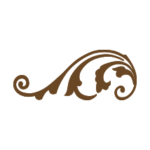History of the Pioneer House
The Pioneer House
“The pioneers who came to the West (sought) for that most precious of all human material possessions, a home. Largely speaking, this home seeker is the forgotten man in the annals of the American West.…Yet he was by far the most important factor in the conquest and development of our American empire. His way of life has vanished and is largely forgotten by all but a comparatively few people. It is, however, a part of our social history and as such should be preserved and cherished. It was the pioneer settlers who won the West when the wooing was difficult and sometimes dangerous, and most of them now sleep in its soil.” – Edward Everett Dale, dean of Oklahoma historians
Frederick Anderson Room (Guest Room 4)
An enduring exemplar of the determined immigrant who forever left behind hearth, home, and kindred, Swedish native Frederick Anderson came to America while still a teenager in 1886. He won land in Kingfisher County in the (Central Oklahoma) Land Run of 1889. He sold that and purchased 160 acres two miles west of Waukomis in 1902 from the family who acquired it in the run of 1893 that established Waukomis. Anderson built a home, married mail order bride Fannie Kerr, whom he had never met, then sired and raised six children with her on the same farm. Anderson’s lineage includes grandsons Richard Anderson, who built both Buffalo Point and the new Buffalo Junction block in downtown Waukomis, and Gene Anderson, long a Waukomis leader and 21st Century owner of Frederick Anderson’s original quarter-section, which is now designated an Oklahoma Centennial Farm.
Cecil Cornish Room (Guest Room 5)
Cornish (1909-2003) grew up on a Waukomis ranch and became a ProRodeo Hall of Famer. During his legendary 36-year career as a trick rider and rodeo performer, he gained renown for his Roman jumping feat, in which he stood atop two horses, riding both at a full gallop, one foot on each one’s back, then took the team through a blazing ring of fire. His most famous mount was Smokey the Wonder Horse, who shook hands, played dead, untied knots, sat like a dog, waved flags, and leapt over three cars parked side by side. Cornish’s trained Brahma bull, Danger, jumped over a Cadillac automobile during his performances.
Pistol Pete Room (Guest Room 6)
“Pistol Pete” is not just the beloved mascot for the Oklahoma State University Cowboys! The famed Frank “Pistol Pete” Eaton was the rough and ready, real life Old West inspiration for the colorful OSU character. Eaton played a mean fiddle, carried Pony Express mail through rain, hail, sleet, snow, and the pitch dark of night from Ponca City to Kansas, and helped clear outlaws from the Twin Territories as a U. S. marshal for Isaac “The Hangin’ Judge” Parker. He chased the Apache Chief Geronimo, too, and later befriended him. A ninety-six-year-old Eaton, still sporting a Colt .45 pistol on his hip, a nimble gait, and long, braided hair and cowboy hat, told an Oklahoma Today magazine reporter shortly before his death in the 1950s that Geronimo was “a gentleman” who “fought for his people” and “loved the Plains.” When asked by a reporter what Eaton thought of Oklahoma, he responded, “What would you think of a land that had been your home for ninety-two years?”
Upper Level:
Longhorn Room (Guest Room 7)
Longhorn cattle were the mighty engine of the legendary Chisholm Trail, which ran straight up present-day Main Street in Waukomis and delivered millions of head of beef from post-Civil War Texas and present-day western Oklahoma to the rest of a fast-growing America. Bred from lean longhorns introduced from southern Europe by the Spaniards with bigger northern European cattle brought by Americans, the longhorn evinced the best attributes of both its predecessors. It possessed size, strength, and endurance, apparent immunity to heat, hunger, and the tick born fever that ravaged Northern milk cows and shorthorns, and the durability to survive rough, marathon treks across the Southern Plains. The longhorn could rumble over sixty miles of badlands heat or cold with no water. Only it could have inaugurated the commercial enterprises that prepared Oklahoma Territory for the great land openings
Happy Camp Room
Waukomis graduate John N. “Happy” Camp (1908-1987) was the town’s towering 20th Century political leader. President of Waukomis National Bank, Camp’s twenty years of election victories to the Oklahoma House of Representatives, brilliant mind, and winsome personality catapulted him to leadership among the House Republican delegation and to the first House committee chairmanship ever for a Republican. Then he came within 1,000 votes of beating Dewey Bartlett, one of the most powerful Oklahoma leaders of the mid-late-20th Century, in the first GOP gubernatorial primary in state history. This electoral power next carried “Happy” to three consecutive terms in the United States Congress in an era when Oklahoma Republicans rarely won that office. He is buried in Waukomis.







